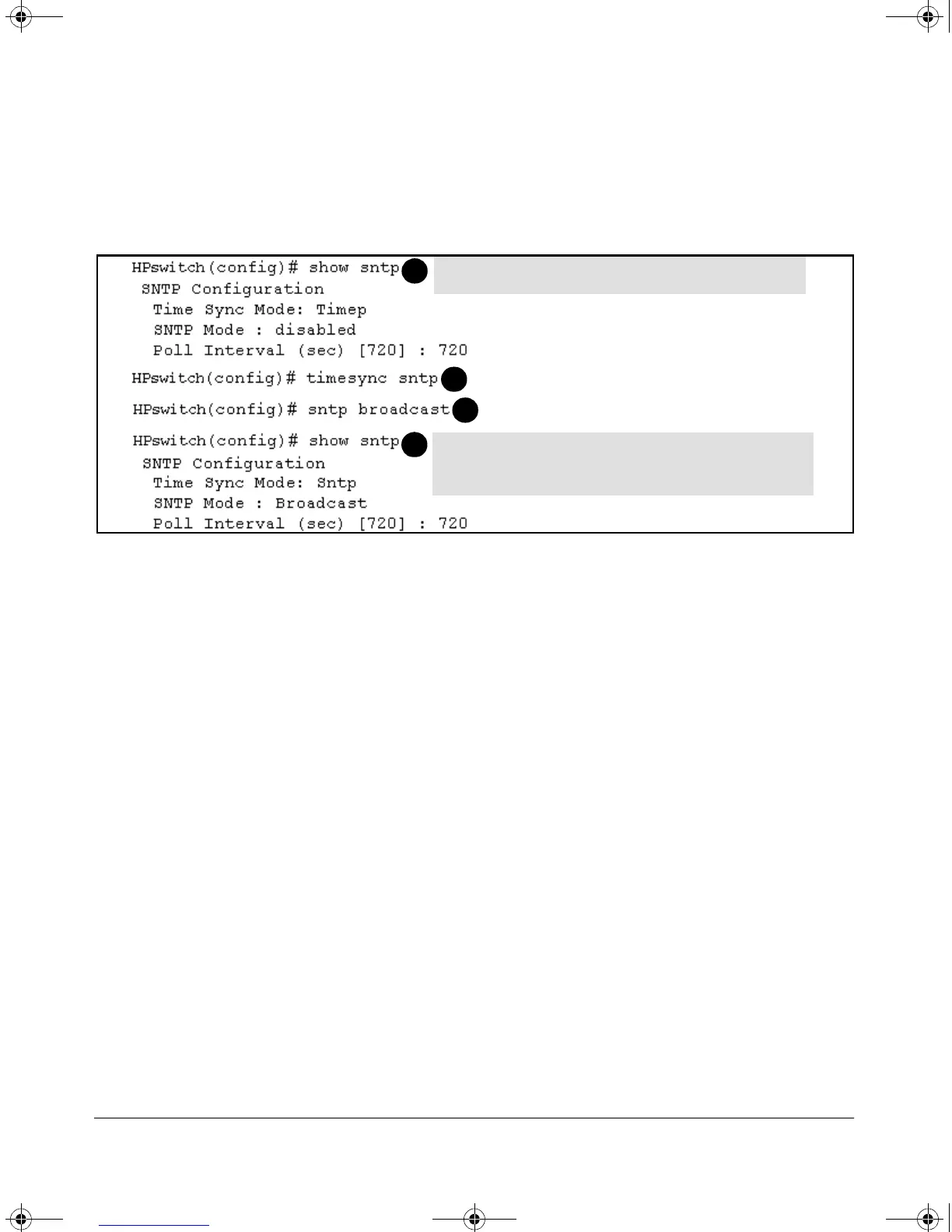8-10
Time Protocols
SNTP: Viewing, Selecting, and Configuring
3. Enable SNTP for Broadcast mode.
4. View the SNTP configuration again to verify the configuration.
The commands and output would appear as follows:
Figure 8-4. Example of Enabling SNTP Operation in Broadcast Mode
Enabling SNTP in Unicast Mode. Like broadcast mode, configuring SNTP
for unicast mode enables SNTP. However, for Unicast operation, you must
also specify the IP address of at least one SNTP server. The switch allows up
to three unicast servers. You can use the Menu interface or the CLI to configure
one server or to replace an existing Unicast server with another. To add a
second or third server, you must use the CLI. For more on SNTP operation
with multiple servers, see “SNTP Unicast Time Polling with Multiple SNTP
Servers” on page 21.
Syntax: timesync sntp Selects SNTP as the time synchronization
method.
sntp unicast Configures the SNTP mode for Unicast
operation.
sntp server <ip-addr> [version] Specifies the SNTP server. The
default server version is
3.
no sntp server <ip-addr> Deletes the specified SNTP server.
show sntp displays the SNTP configuration and also shows that
TimeP is the currently active time synchronization mode.
1
2
3
show sntp again displays the SNTP configuration and shows that
SNTP is now the currently active time synchronization mode and is
configured for broadcast operation.
4
4
!Software.book Page 10 Thursday, October 10, 2002 6:10 PM

